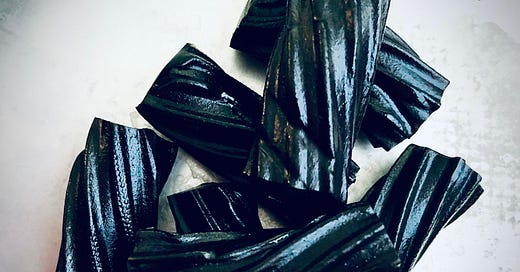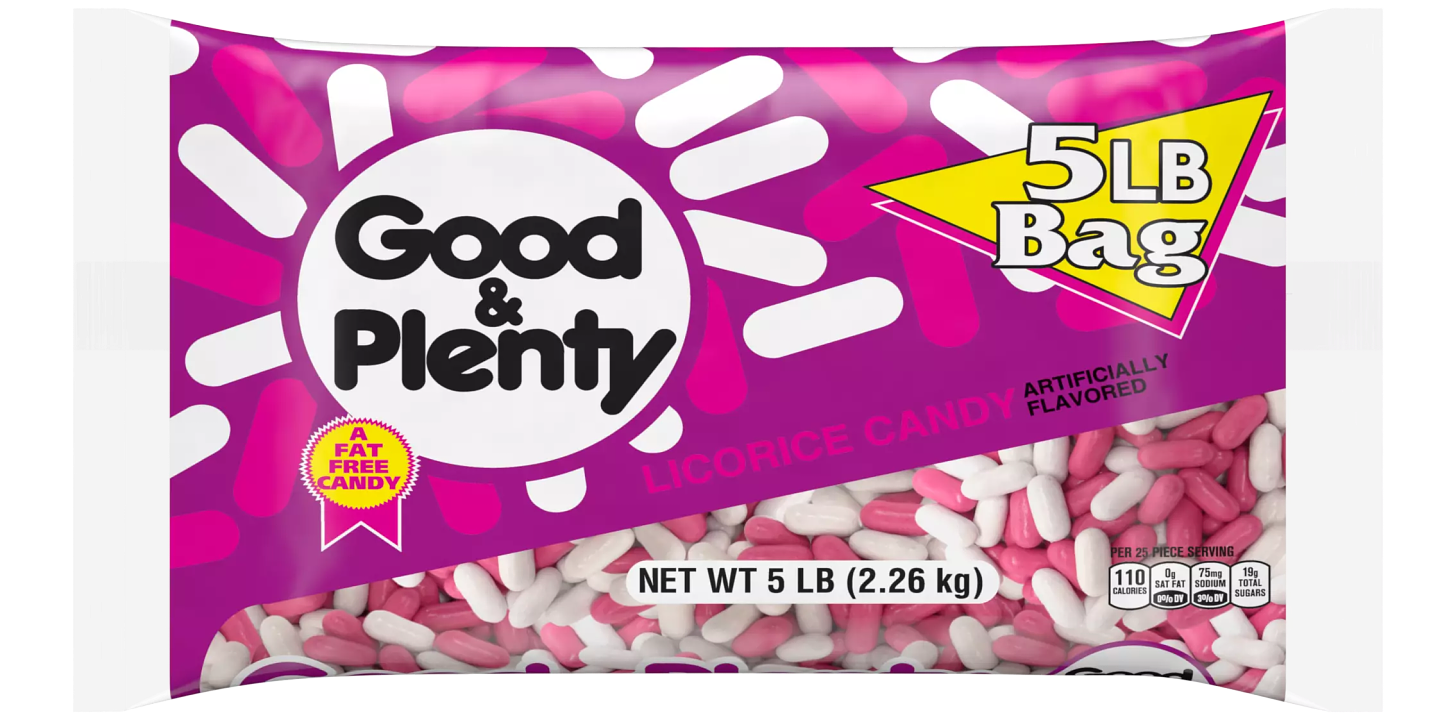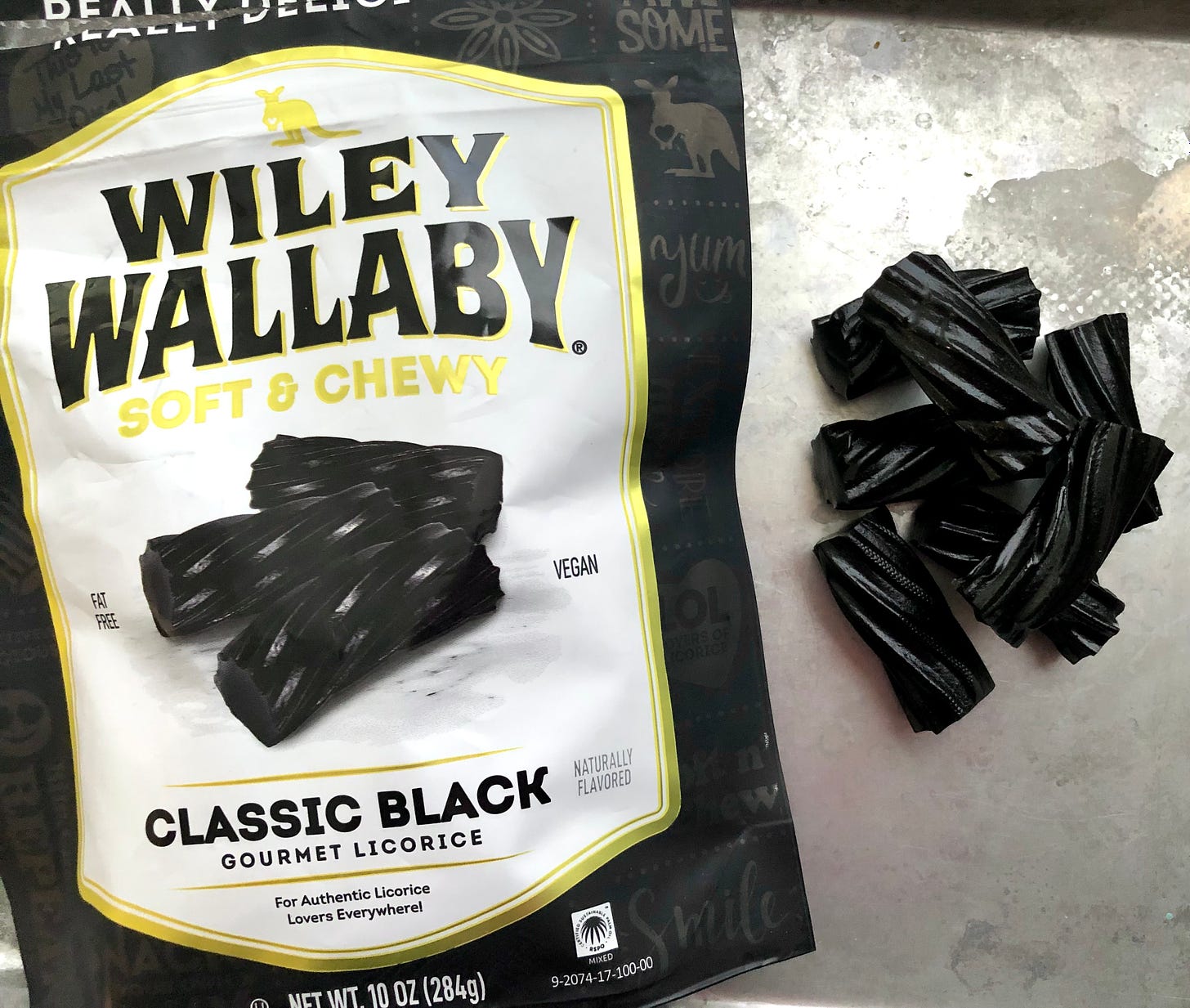Back in Black: A deep dive into a taste-bud kaleidoscope you only *mostly* hate
In which I take a seriously salty licorice-ing, but kept on tickorice-ing
I know, I know. You hate licorice. It’s understandable, really. Look at it lying there in wait, plotting: the color of void, unsmiling, clearly poisonous.
The dose makes the poison, though, and a faint, medicinal undertone makes a lot of dishes sing. The signature flavor of licorice root is anethole, a beautiful little monoterpene ring molecule found in anise, star anise, and fennel, too. Chervil and tarragon, as well as some basils, have a related flavor from estragole. Love pho? That’s star anise and Thai basil. Italian sausage? Fennel seed. French chicken in cream sauce? Tarragon. Chinese five spice powder, anisette cookies, Greek ouzo, Kashmiri Rogan Josh…and anise, fennel, and licorice root itself are in about a thousand herbal teas. There are related aromatics in cinnamon, mace, and sassafras, which is the base flavor of root beer. So, complain all you want — it turns out you love it as a sensory turbo booster.
Do you call for encore when it’s the star of the show, though? Spoiler alert: there’s one I hate with the heat of a thousand suns near the end, and I certainly hated it in every form as a child. I still feel vaguely ill when looking at a box of Good & Plenty, although that might be the unfortunate Pepto-pink, and the capsule shape makes it a literal hard pill to swallow. Still, dating from 1893, it’s one of the oldest candy brands in North America, and it has its own, curiously non sequitur 1950s jingle that you definitely want to hear. It also comes in everything from 1.8 oz to 5-lb bags, so current owner Hershey is laughing all the way to the bank.
Is my gut-level distaste fair? After all, the sense of taste changes with time, experience, and context. In the last several years, I’ve discovered that…
I love licorice.
Including Good & Plenty, which has a nice crunchy shell, like a friendly M&M’s/VapoRub mashup. I prefer chunky style and usually go for Wiley Wallaby’s Classic Black Soft and Chewy. Bouncy, herbal, and black-hearted as the Devil himself, it’s the one to choose if you want licorice and nothing but. There’s just a tinge of menthol feeling in the upper nose, but in the main, it’s sweet, woodsy, and leaves your tongue comfortably numb for a minute or two. It might look like it has a gummy bear texture, but I like to describe the mouthfeel as al dente. When you know that most licorice is wheat-based, that’ll make sense.
I’m looking to expand my anethole horizons, though, so I grabbed a natural-looking brand I’ve never tried — New Zealand brand RJ’s. And, I’m especially keen to try the one I’ve been warned against: Scandinavian-style salty licorice. In this case, it’s Gustaf’s Dutch.
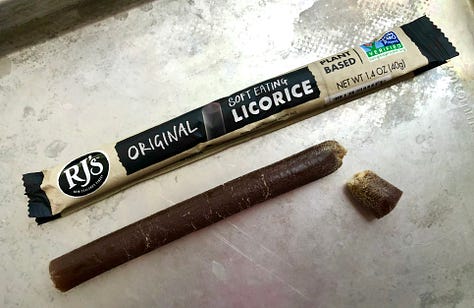
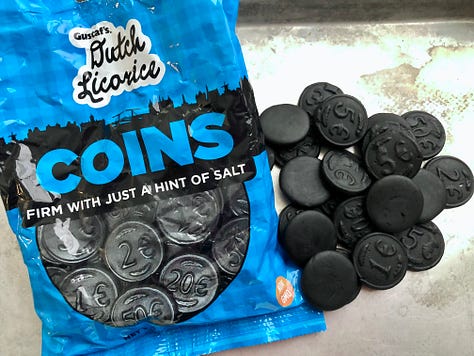
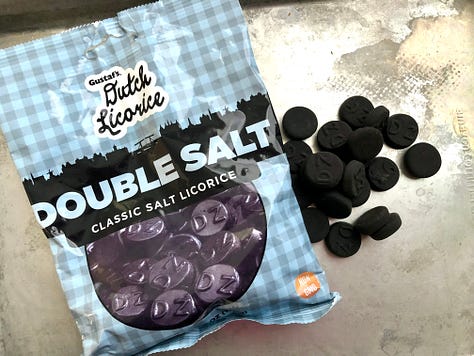
As you can see from where I twisted a piece off, RJ’s is relatively tender, reminiscent of a dried date in texture. The flavor is lovely — natural, softly medicinal, no anesthetic bite, like an herbal Tootsie Roll. If you’re feeling chicken, this one is a great re-introduction, and I am adding it to my licorice rotation.
What you definitely should NOT do is what I did: start with the double-salted. Friends who love salty licorice (I count only two, both Dutch) tell me that it’s an acquired taste, but so is licorice itself, and I’ve made my way as a food writer by trying disgusting foods most people wouldn’t touch. Surely this is child’s play!
I’m here to tell you, it is not. It is deadly serious. I actually spit this one into the trash. But don’t I like licorice? Yes. The problem here is not licorice; it’s salt. These are Vantablack in flavor as well as color, consuming everything before them in a churning singularity, letting nothing escape. Eating one is like actually seeing and hearing the flavor of salt, nothing but salt, salt as an elemental demon, a blazing inferno of ice cold salt. I can’t make sense of it, because according to the package, there are only 30 mg of sodium in 30 grams of these unassuming little pieces of candy, but it’s a taste TARDIS, mind-bendingly bigger on the inside. This is the single most caustic, violently resentful thing I’ve ever tried, easily surpassing Bud Light’s Eggnog Seltzer. My reaction reminds me of Anthony Bordain’s description of hakarl, ammonia-laden Icelandic fermented shark: “unspeakably nasty.”
It really shouldn’t be called candy. I can’t glean even a hint of sweetness out of the blinding flash of salt. Humbled, I contemplate the lightly salted bag. Am I brave enough to go near this one, after that one? I took a couple of days to let time cleanse my palate and heal my psychic wounds. To get a sense of what I’m in for, I compare the sodium in the lightly salted to the double salted, and there is…more? What?
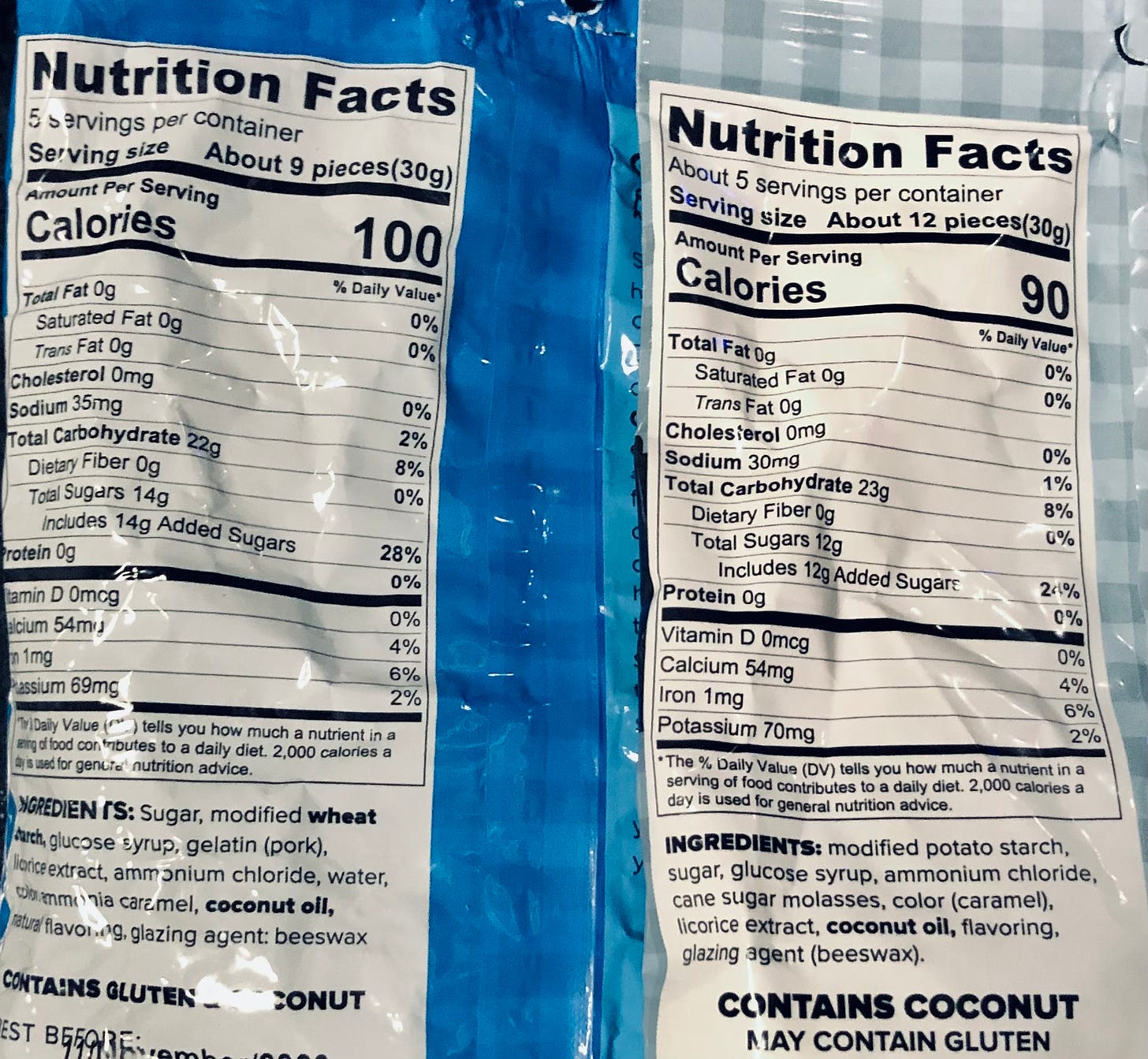
The key to understanding, as with many things food, is to look at the ingredients. The “salty” flavor of this kind of licorice comes not from sodium chloride, but ammonium chloride. This accounts for the bizarrely cyclonic sour-bitter effect of this kind of licorice. It’s a common additive for dough conditioning, but it’s not a common flavoring, and this accounts for my inaugural, hakarl-level reaction of disgust. If you’ve ever tried and deeply disliked a low-sodium soup flavored with potassium chloride salt substitute, you’ll have an inkling of this inky black bitterness.
Okay, let’s try the one with (*cringes*) less ammonium chloride! The texture is different — the brand’s offerings vary, but this one is very firm, more like Now and Laters than gummy candy. The comparatively low sugar content means it isn’t sticky, though. Saltiness is still by far the most prominent aspect of this “treat”, but it’s not intolerable; instead of repeatedly punching you in the face, it’s just screaming in your ear. There’s an odd sourness, and a sort of burned rubber aftertaste. It is…not delightful. However, the licorice is perceptible behind the wall of salt, and I can imagine developing an appreciation for it. Someday.
That day is not today.
Appreciation is a complex process worth cultivating, though, and licorice is a complex flavor worth studying. If you’re trying it again for the first time in a long time, take a moment to rest your mind on it. Keep an open heart, and see whether you can experience the taste without any commentary, at least at first. Observe your responses. Maybe you’ll meet a new friend. Even if you don’t, it will later inform your experience of other foods. You’ll find you understand what spices are in your curry or cookie, and your favorite chai may open like a taste-bud kaleidoscope.
Just don’t start with the salty licorice. The only nice thing I can say about it is as bittersweet as the candy itself: It’s as close as I’ll ever get to meeting Anthony Bourdain.
Nutrition notes from the RD:
All of the tea and candy brands mentioned here are honestly reviewed. I have no paid partnerships with them and purchased everything with my own money.
Before you go nuts with it, keep in mind that the old adage that dose makes the poison is literally true. Licorice root contains glycyrrhizin, a compound we perceive as sweet, which explains why my current steamy obsession of Tazo’s Glazed Lemon Loaf tea tastes like lemon loaf and not licorice. But, too much glycyrrhizin can be dangerous. I’ve actually seen a case of chronic licorice toxicity from a supplement containing licorice root, and pregnant women in particular should avoid large amounts. Check with your medical team for advice specific to you, as always.

